Raised beds help the soil lose texture and become predominantly formed and dense structures. Over time, nutrients in the soil can also be depleted, except for supplements such as organic matter and fertilizers. A modern method that is better than compost and fertilizer is cover cropping.
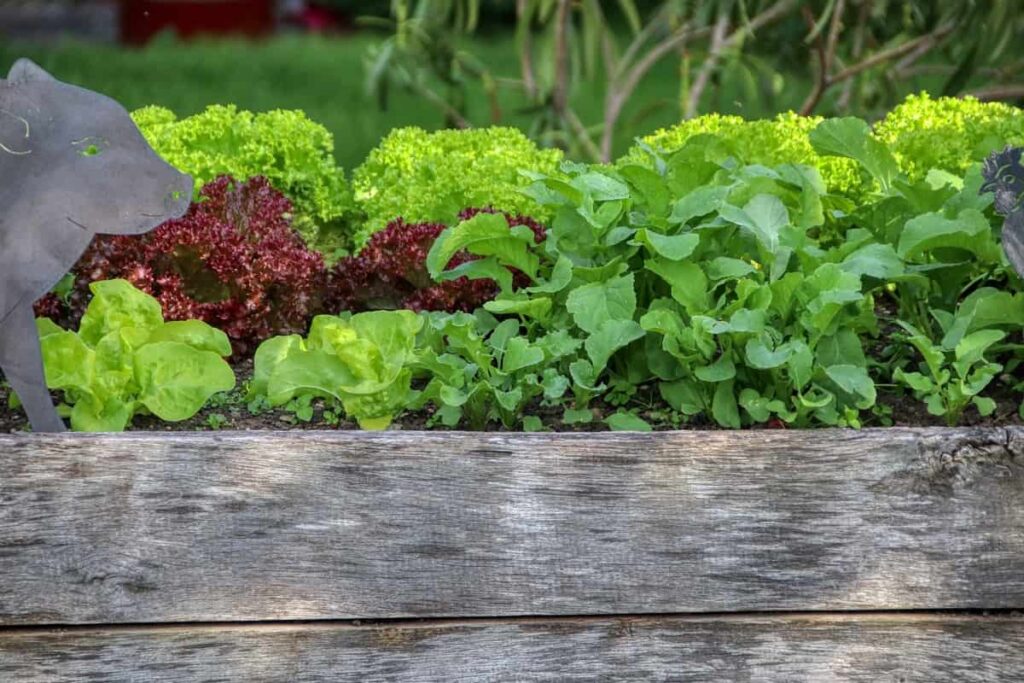
There are many options for cover crops for raised beds. Cover crops are crops you grow not for harvesting but to cover ground and common gardening problems such as soil erosion, nutrient deficiencies, weed growth, and the reduction of animals such as earthworms and insect pests.
Do I need a cover crop in a raised bed?
Cover crops keep the soil covered in raised beds. Soil covered with living cover crops and crop residues helps moderate soil temperature and moisture and provides a habitat for many other soil organisms (earthworms, bugs, and microbes). Cover crops serve many beneficial purposes, including increasing soil nutrient levels, improving soil structure and drainage, feeding beneficial insects and microbes, reducing weed populations, and preventing soil erosion by moisture and wind.
Cover crops help reduce soil compaction, capture additional nutrients, and prevent erosion during their growth. Their roots penetrate and help loosen heavy-textured soil, allowing better air and water penetration. Legumes add nitrogen to the soil. Plant cover crops add organic matter to the soil, creating better soil structure and fertility. All gardens need organic matter to sustain the bacteria, fungi, earthworms, and other organisms needed to create healthy, fertile soil.
Best time to plant cover crops in raised beds
Fall is the best time to plant cover crops because your growing season is ending, and the beds will be empty until spring. Remove all existing plants and weeds from the raised bed when ready to plant your cover crop. Densely seed your raised bed in late summer or early fall. These crops are planted after the main crop is harvested and are usually sown in late summer to early fall.
But remember that planting later means the seeds go into cooler soil, resulting in slower establishment and growth. Raised beds can lose soil texture, becoming compacted over time. They can lose nutrients over time without adding any supplements like organic matter like manure or compost. A cover crop is a ready-to-sow seed of fast-growing plants—often legumes or grasses—planted in late summer or fall into vacant or fallow garden plots.
In winter, these crops work hard to renew your soil health, and adding essential organic matter to the soil improves soil structure and increases soil fertility. Legumes also “fix” nitrogen in the soil. This “green manure” mainly provides a living mulch that protects the soil from winter erosion. Most cover crops need at least four to eight weeks of plant growth before a killing frost occurs.
In case you missed it: Organic Raised Bed Gardening: How to Start from Scratch, A Step-By-Step Guide for Beginners
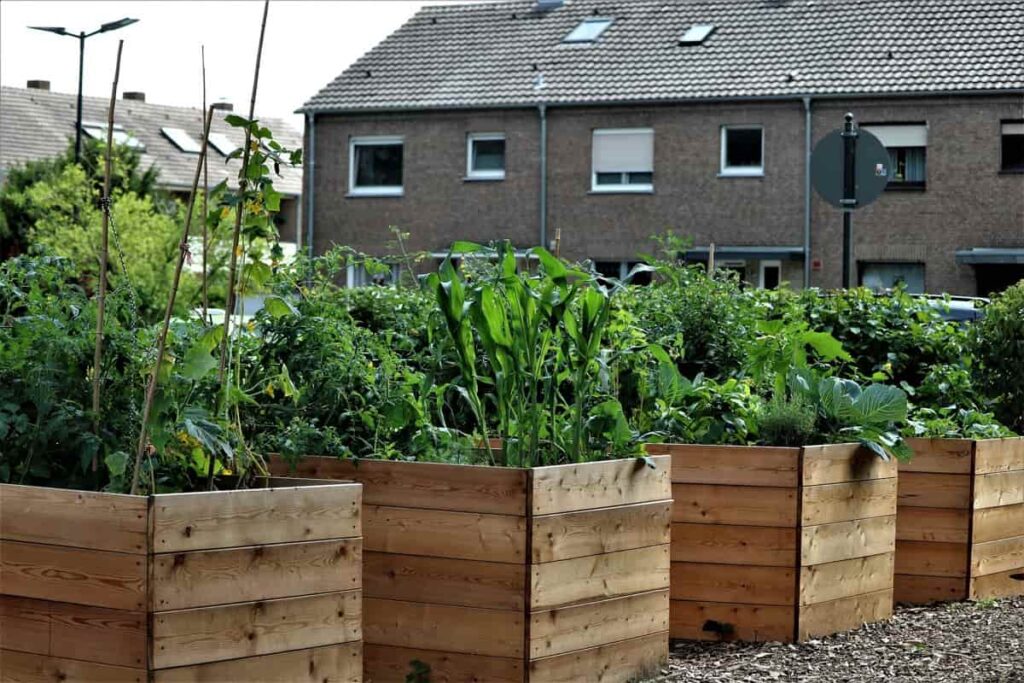
This allows enough time to maximize above-ground growth for abundant biomass production. The timing of planting cover crops depends on the crop you are growing and why you are growing it. As a general rule, you should turn crops before they produce seed. Cover crops can become weeds in your garden if you wait until they produce seed before you turn.
| Cover Crop | Type | When to Plant | When to Turn |
| Oats | Cereal | Spring or Fall | Summer or Spring |
| Rye | Cereal | Mid-late Fall | Early Spring |
| Cowpea | Legume | Summer | Early spring |
| Buckwheat | Brassica | Fall or Spring | Spring or Fall |
| Hairy Vetch | Legume | Early Fall | Spring |
| Barley | Cereal | Fall or Spring | Spring or Fall |
| Alfalfa | Legume | Spring or Late Summer | Fall or Spring |
| Crimson Clover | Legume | Spring or Fall | Fall or Spring |
Major keys to cover crop success in raised beds
Plan Ahead: The cover crops you select will not host specific pathogens or pests that are edible for flowering plants to be planted during the growing season. Combine cover crops with seasons in that raised beds are not used for food and flowering plants. Combine the cover crops with the desired location (e.g., compaction, fertility, organic matter enhancement, water retention, etc.).
Terminate cover crops at the right time: Cover crops should be removed when they are 50-80% in bloom. Do not allow cover crop(s) to go to seed; they will germinate and compete with edible and flowering plants during the desired growing season. If it’s getting close to planting for the season, but there are no flowers on the crop, that’s okay. Go ahead and finish them off anyway.
Termination of the cover crop will mainly depend on the raised bed size. For small to medium raised beds, cut cover crops at the base of the plant using shears. For large raised beds, use a weed wacker. Place all plant cuttings evenly on the soil surface. The cover crop does not need to be cut into small pieces. Just keeping them on the soil surface will be enough.
The process of sowing cover crops
- Sowing cover crops is a straightforward process.
- Remove all garden debris from previous crops and any weeds to plant cool-season plants.
- With a garden spade, dig the soil to a depth of 8 to 12 inches, turning the soil and breaking up any hard clumps.
- Rake the soil evenly, then tamp it down with the back of the rake.
- Spread your seeds evenly over the surface, or scatter them, taking care not to plant too densely.
- Gently pour the seeds into the soil and tamp them down. Water gently to settle the seeds and soil.
- These fast-growing plants establish quickly and thrive in the warm days and cool evenings of late summer and fall.
Benefits of cover crops in raised beds
Although the primary goal is to reduce soil erosion, cover crop for raised beds in home gardens have several additional benefits. Cover crops are essential in raised bed gardening. Here are some of their uses:
Adds soil organic matter to the garden
Cover crops are broken down by soil microorganisms, forming small clumps that help bind soil particles together and are called aggregates. These “clumps” form spaces in your garden soil that help store air and water. So basically, water doesn’t come from the top when you water the garden. Bunches allow water to penetrate the soil. Therefore, unhealthy compacted soil will drain faster than porous soil rich in organic matter.
In case you missed it: Raised Bed Vegetable Gardening For Beginners
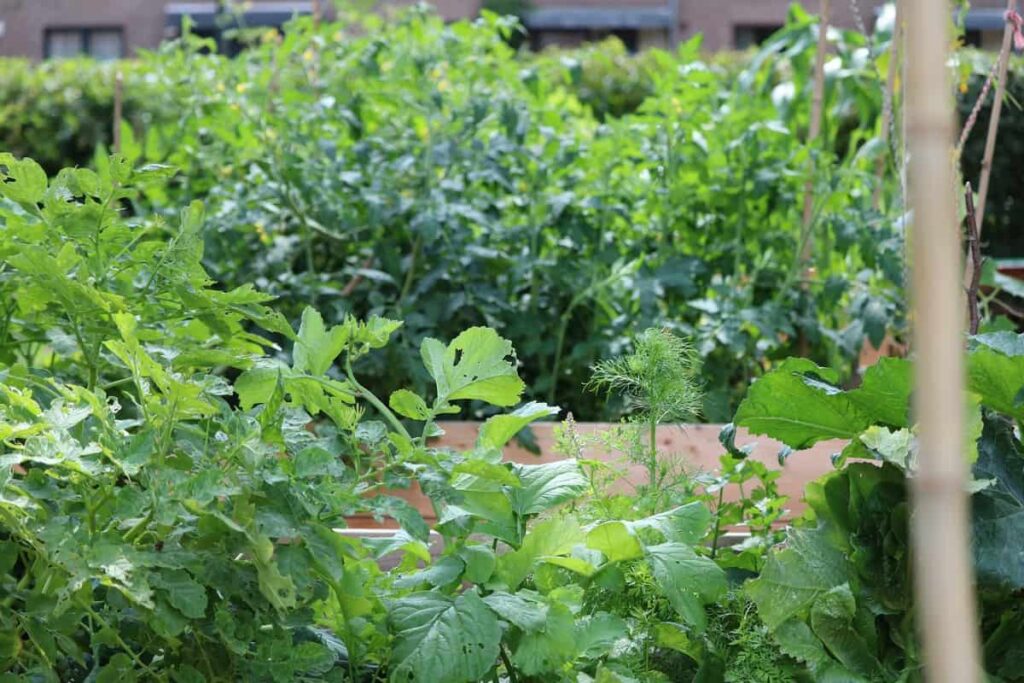
Reduces nematodes
Nematodes are parasitic fungus that attacks plants’ roots, causing them to become unhealthy and often die. Nematodes have a hard time surviving in healthy soil.
Suppress diseases
Cover crops absorb rain spray and help prevent soil from splashing onto plants. It helps control diseases such as white powdery mildew on the pumpkin and septoria leaf spot on tomato, among other diseases.
Provides aeration
Loosens the subsoil, which helps plants to have a healthy root system and strong growth potential.
Provides nutrient enrichment
Cover crops add nitrogen (N) to the soil. In addition to recycling phosphorus, potassium, calcium, magnesium, and sulfur into the soil. As it breaks down the released nutrients, it helps reduce the need for additional fertilizers.
Aids in weed reduction
Weeds thrive in bare soil. Keeping a cover crop on the soil, if not planted with a cash crop, protects against weeds.
Feed pollinators
When cover crops are allowed to flower, pollinators can feed later in the fall.
Prevention of soil erosion
In late fall or winter, rain and wind can erode the soil surface in your raised bed. If you plant cover crops like grasses and grains, their roots will hold the soil together and prevent erosion.
Retention of soil nutrients
Raised beds are generally nutrient-dense because gardeners use fresh soil and compost and continuously fertilize the bed. Rain can wash away soil nutrients in a raised bed without a liner during the fall. To prevent nutrient leaching, you should plant winter grains such as wheat, oats, and barley so they can grow and absorb soil nutrients.
What is a no-till cover crop?
In a no-tillage system, the benefits of cover crops are maximized by allowing vegetables or other cash crops to grow for a short period before planting them and by managing a no-till cover crop.
15 cover crops for raised beds
Red or crimson clover
Red or crimson clover is sown in late summer or fall and planted in spring in zones 6 and higher. It is used as a summer legume in colder regions where it is usually winter-killed. Let it bloom, and the bees will love you.
Cowpeas
Cowpeas are also known as field peas or, more commonly, black-eyed peas. If the main goal is to prevent soil erosion, they have a long taproot that makes them a great choice. They are heat and drought-tolerant, making them a good choice for home gardeners in warm climates. Cowpeas will add nitrogen to the growing soil and are edible if you choose to grow them to maturity.
In case you missed it: Commercial Raised Bed Farming – A Full Guide
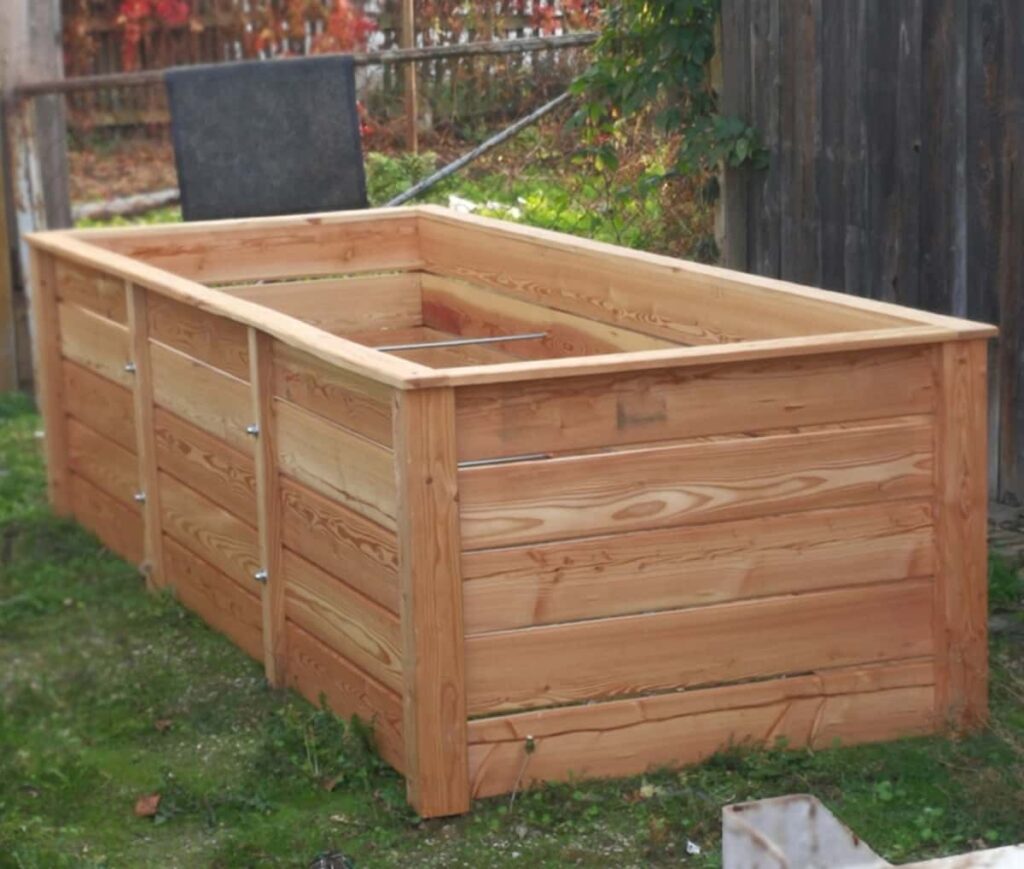
Peas
Unlike cowpeas, regular peas are not heated/drought tolerant and are considered a cool season cover crop. Peas also have nitrogen-fixing properties. Peas are frost tolerant and can be grown later in the season in temperate climate conditions.
Triticale
Triticale is a mixture of wheat and cereal rye mixture and shares many characteristics with the above plants. Growing cover crops in raised beds will prevent weed growth and make an excellent addition to the compost pile if you avoid using them as mulch.
Buckwheat
It is one of the fastest-growing cover crops that can be planted and grown anytime during the growing season. It also induces an allelopathic effect, making it a must-have option for raised beds when suppressing weeds is your goal. Buckwheat is edible and can be harvested for its microgreens, or you can harvest the seeds to make flour. Although cover crops are not grown to maturity because they draw soil nutrients to maturity rather than adding nutrients to the planting soil.
Alfalfa
It is a perennial cover crop in the pea family known to fix nitrogen in the soil. It is best to plant it after crops that deplete nitrogen from the soil, such as corn. It is commonly grown as fodder for farm animals because of its high protein content. It will also produce stunning purple or blue flowers, providing much-needed food for pollinators.
This cover crop is easy to cut and leave and can be used the same way you mulch straw. Cut the plants back to soil level and leave the greens on the soil. Allow them to dry out and break in the winter. Then come spring, plant the next crop as you usually would.
Sorghum
It is also called Sudan grass and makes a great winter mulch to protect soil from harsh elements or weeds. It has an extensive root system that adds abundant organic matter to your soil. Sow sorghum in mid-fall and either cut it after a few weeks of growth or let it die back in winter frosts.
Millet
There are wide varieties of millet, but commonly, pearl millet is mainly used as a cover crop and is usually not sown by itself but as part of a cover crop seed mix. Millet has many unique advantages, including high heat tolerance in hot and dry conditions. It can also tolerate sandy soil. Like most grass family members, millet can easily self-seed for the next year and start its life cycle all over again. When using this plant as a cover crop, cut it before it goes to seed unless you want to spread it.
Good winter cover crops for raised beds
Austrian field peas
It is a cool season plant; these are good cover crops for nitrogen production. These have better cold tolerance than Canadian field peas but grow well when planted after wheat or other summer annuals. It is preferable to plant in August after the hottest days have usually passed. Austrian winter peas are often planted with seed mixtures such as oilseed radishes or clover varieties when used as a cover crop.
Forage radish
These are excellent at breaking up compacted soil and have earned the nickname “bio-drills.” Planted in early fall, 3 to 10 weeks before the first frost, forage radish roots can penetrate deeper than cover crops such as cereal rye.
In case you missed it: How to Control Western Flower Thrips in Chilli Crop: Identification, Fact Sheet, Chemical and Biological Management
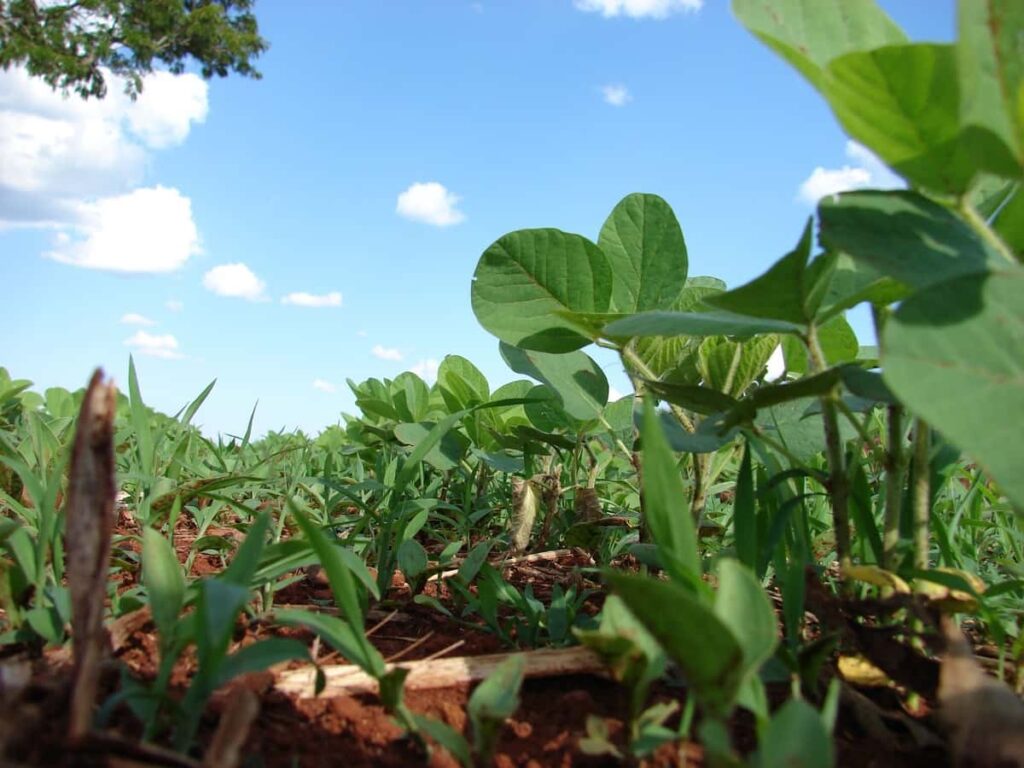
Winter rye
Growing winter ryegrass as a cover crop is an excellent choice. It is cheap, readily available, and easy to grow and cultivate. Rye produces more dry matter in the spring than other cereals, and its spreading, deep roots have beneficial effects on tillering. It is a grain and an excellent winter field cover crop because it quickly produces ground cover that holds soil in place against wind and water forces.
Rye’s deep roots help prevent composting, and because its roots are extensive, winter rye also positively affects soil tillage. Annual in zones 3 to 11. The advantages of winter ryegrass are highly tolerant of poor soil, develops an excellent root system that breaks up hard soil, has a fast growth pattern, quickly produces an adequate ground cover, and adds organic matter and green nutrients to the soil when broken down.
Oats
Oats belong to the grass family, which can be grown in winter and spring. It is an excellent option for gardeners who live in temperate climate conditions with low growth rates. Oats can be sown in the fall and grown in the winter, or they can be sown in the spring and grown in late summer. The advantages of Oats cover crops in the raised bed are rapidly-produce a dense growth pattern, suppressing weeds, and protect against soil erosion, break up/preventing soil compaction.
Hairy vetch
Hairy vetch is a legume. It grows in zones 1 through 5 and can be planted in spring or fall. Hairy vetch benefits are naturally adding nitrogen to the soil, growing quickly, forming a dense cover, and reducing weed establishment.
Fava Beans
Fava beans greatly improve soil nitrogen levels, a strong root system breaks up compacted soil, reduces populations of certain nematodes, and some varieties can also produce edible crops.
Clover
There are many varieties of clover, not just the common 4-leaf variety. And many of them can be used as cover crops growing in raised beds. Some popular varieties include white clover, red clover, and crimson clover. It is related to other legumes such as peas, beans, and peanuts. They fix nitrogen in the soil through nodules growing along the roots. Clover establishes itself in early spring and has a growth habit that makes it an excellent weed suppressor.
In case you missed it: How to Grow Brahma Kamal from Cuttings: Planting and Care

It will also produce flowers for bees and beneficial insects – especially crimson clover, as it is often one of the first flowers to bloom in spring crops. Clover benefits thrive in many growing areas, fix soil nitrogen deficiency, and produce dense, weed-inhibiting plants. If allowed to bloom in the spring, the flowers provide excellent food for pollinators.
Conclusion
Cover crops are beneficial for raised beds. Cover crops are mostly legumes and grains, but other plants such as buckwheat, mustard, and forage radishes can be used. Growing cover crops at the end of the season is more popular, even in small gardens. These cover crops have seeds that are easy to disperse, and they do the hard work of fixing nutrients and improving soil conditions over winter before planting in the spring.
- Economical Aquaculture: A Guide to Low-Budget Fish Farming
- 15 Common Planting Errors That Can Doom Your Fruit Trees
- How to Make Houseplants Bushy: Effective Tips and Ideas
- Innovative Strategies for Boosting Coconut Pollination and Yield
- Pollination Strategies for Maximum Pumpkin Yield
- The Complete Guide to Chicken Fattening: Strategies for Maximum Growth
- Natural Solutions for Tulip Problems: 100% Effective Remedies for Leaf and Bulb-Related Issues
- Revolutionizing Citrus Preservation: Towards a Healthier, Greener Future
- Natural Solutions for Peony Leaf and Flower Problems: 100% Effective Remedies
- Maximizing Profits with Avocado Contract Farming in India: A Comprehensive Guide
- Natural Solutions for Hydrangea Problems: 100% Effective Remedies for Leaf and Flowers
- The Ultimate Guide to Choosing the Perfect Foliage Friend: Bringing Life Indoors
- From Sunlight to Sustainability: 15 Ways to Use Solar Technology in Agriculture
- The Ultimate Guide to Dong Tao Chicken: Exploring from History to Raising
- The Eco-Friendly Makeover: How to Convert Your Unused Swimming Pool into a Fish Pond
- Mastering the Art of Delaware Chicken Farming: Essentials for Healthy Backyard Flocks
- 20 Best Homemade Fertilizers for Money Plant: DIY Recipes and Application Methods
- How to Craft a Comprehensive Free-Range Chicken Farming Business Plan
- Brighten Your Flock: Raising Easter Egger Chickens for Beauty and Bounty
- How to Optimize Your Poultry Egg Farm Business Plan with These Strategies
- Subsidy for Spirulina Cultivation: How Indian Government Schemes Encouraging Spirulina Farmers
- Ultimate Guide to Raising Dominique Chickens: Breeding, Feeding, Egg-Production, and Care
- Mastering the Art of Raising Jersey Giant Chickens: Care, Feeding, and More
- Ultimate Guide to Raising Legbar Chickens: Breeding, Farming Practices, Diet, Egg-Production
- How to Raise Welsummer Chickens: A Comprehensive Guide for Beginners
- How to Protect Indoor Plants in Winter: A Comprehensive Guide
- Ultimate Guide to Grow Bag Gardening: Tips, Tricks, and Planting Ideas for Urban Gardeners
- Guide to Lotus Cultivation: How to Propagate, Plant, Grow, Care, Cost, and Profit
- Agriculture Drone Subsidy Scheme: Government Kisan Subsidy, License, and How to Apply Online
- Ultimate Guide to Raising Araucana Chickens: Breed Profile, Farming Economics, Diet, and Care
- Bringing Hydroponics to Classroom: Importance, Benefits of Learning for School Students
- Ultimate Guide to Raising Polish Chickens: Breed Profile, Farming Economics, Diet, and Care
- Ultimate Guide to Raising Australorp Chickens: Profile, Farming Economics, Egg Production, Diet, and Care
- Silkie Chicken Farming: Raising Practices, Varieties, Egg Production, Diet, and Care
- Sussex Chicken Farming: Raising Practices, Varieties, Egg Production, Diet and Care
- Homemade Feed Formulations for Livestock: Discover Cost-effective Starter to Finisher Feed Recipes